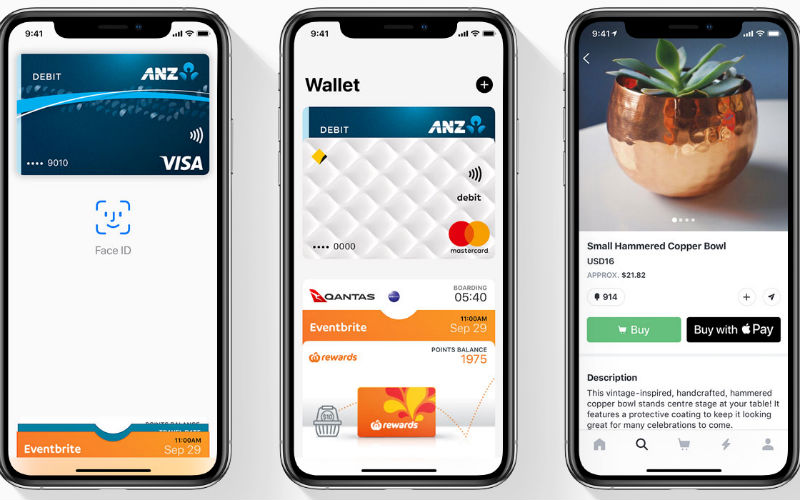It sounds pretty easy - you deposit funds into your savings account, and you earn interest. But not all savings accounts make it simple to get their best interest rate.
In fact, an inquiry by the Australian Competition and Consumer Commission (ACCC), published in December 2023, found retail savings accounts can be a minefield of complexity, with banks using conditional rates, strategic pricing, and fees and charges to make it extremely difficult for punters to get the best returns.
It's what most of us suspected, so let's run through the minefield to give you a sporting chance of earning the best interest on your savings that you can.
What are the different deposit accounts?
Before we delve into savings accounts, it pays to make sure your savings are in one. Savings accounts are different to everyday transaction accounts. Savings accounts will earn more interest, have a variable interest rate, and usually don't have a debit card attached to them so it's harder to dip into your funds.
You may be keeping your money in a transaction account but it's unlikely to be earning any interest there, or very little, so if you don't have a savings account for storing your savings, your first step is to open one.
To do this, many banks will require that you also have a linked transaction account. This makes it easier to transfer money between the two accounts. If you already have a transaction account, you may not get the best interest rates on the market by opening a savings account with your existing bank. It certainly pays to shop around.
To get an idea of what's available on the market, the table below features high-interest savings accounts offering some of the highest interest rates currently on offer:

- Bonus variable rate for the first 4 months on balances up to $250k and high variable ongoing rates.
- No fees and no monthly requirements to earn interest.
- Easily open an account online in 3 minutes.
What are the different interest rates attached to a savings account?
Before you go opening a savings account, it's wise to be across the terms the banking industry uses. Some savings accounts may offer a flat rate of interest but for many others, there can be two components of a savings account interest rate:
-
The base rate
-
The bonus rate
It pays to understand what they mean.
The base interest rate
The base interest rate is essentially the default interest rate on your savings account that you earn without having to meet any specified conditions.
This is usually a relatively low rate compared to the featured savings account rates that banks generally highlight on their websites and in their marketing material.
When you see a dazzling interest rate on a savings account, also check what the base interest rate is.
The bonus interest rate
The bonus interest rate is an extra interest rate some savings accounts offer on top of the base rate. It can be either an introductory rate for a limited number of months (also known as a honeymoon rate) or a 'conditional rate' that account holders may qualify for by meeting particular requirements each month.
Here's a list of some common requirements for savers to achieve the conditional bonus rate of interest:
-
Depositing at least $X into your savings account each month
-
Making zero or limited withdrawals each month
-
Having a linked transaction account with $X deposited each month
-
Making a certain number of transactions each month using the linked transaction account
Some accounts may require a combination of such conditions to be met for the account holder to qualify for the bonus interest.
Savings accounts with bonus interest rates are much more likely to have a higher rate in total than one without but - beware - there are some savings accounts that have a bonus rate with little to no base rate. This can mean your savings account could be earning you very little interest at all if you’re not regularly satisfying the bonus conditions.
How many Australians get the bonus rate on their savings accounts?
This will probably shock you, but the ACCC found on average 71% of bonus interest accounts did not receive bonus interest in any given month of their focus period.
The ACCC noted:
While high headline interest rates may seem attractive to customers, they can come attached with conditions that are hard for customers to meet and keep track of.
The ACCC's Retail Deposits Inquiry report found Australians were being short-changed billions of dollars in interest on savings held in a complex network of more than 900 transaction and savings accounts heavily weighted towards luring new customers at the expense of existing ones.
It noted the terms and conditions for some savings accounts ran up to 108 pages.
Case study
The inquiry cited one example of a customer with $5,000 in a bonus interest account, adding $200 a month, could earn $328 in interest over a 12-month period if they met the bonus conditions each month and achieved the headline interest rate of 5.25% p.a.
However, this could drop to only $18 if they continually failed to meet the bonus conditions, achieving only the 0.3% p.a. base interest rate.
The inquiry concluded the customer would be better off earning the same bank's unconditional savings account rate of 3.75% p.a. which would return $232 in interest over a year.
Told you it was a minefield.
Understanding honeymoon rates
As we've touched on, honeymoon rates - perhaps more commonly known as introductory or welcome rates (but they don't sound as interesting) - are temporary interest rates offered in the first few months of opening an account. These interest rates are higher than the average you'll find on the market, a deliberate tactic to try to entice new customers.
When you compare different high-interest savings accounts, some of the rates that come up are likely to be honeymoon rates that generally apply for three or four months for new accounts holders only. After that, the savings account will pay a lower revert rate. You need to read the fine print of the advertised products to ensure you understand what rate will apply for what period and what the rate will be after that.
It's possible to 'churn' savings accounts like some people do with credit cards, that is, jumping from one product to another to take advantage of introductory or other special offers. However, this can sometimes be a little more difficult and time consuming with savings accounts, although there's nothing stopping you from doing it if you're committed.
How is interest calculated on savings accounts?
There are essentially three different components that work together to calculate your savings account interest:
-
The principal: the amount you have in savings which increases with regular deposits
-
The interest rate: savings accounts use compounding interest, which means both the principal and additional interest earn interest
-
Time: how often interest is calculated and paid can have an impact on interest.
Most institutions will have a savings account calculator that will work out your final interest for you. But if you want to know exactly how it works, there's a general mathematical formula for working out savings account interest:
A = P x (1 + R/n)n
-
A = your final amount
-
P = the principal
-
R = your interest rate as a decimal (e.g. 2.8% = 0.028)
-
n = number of time periods (e.g. interest calculated monthly for two years is 24 time periods).
Different savings accounts can calculate interest yearly, quarterly, monthly, or even daily, which can lead to different interest returns. You should check the terms and conditions to see how your bank calculates it.
Let's say you have an initial deposit of $5,000, and don't make any extra contributions. Your interest rate is 2.80%, and your bank calculates and pays interest on a monthly basis. After one year, your interest calculation would look like this:
= 5,000 x (1+ 0.028/12)12
= 5,000 x 1.002312
= $5,141.8
In this example, you'd have earned more than $141 in interest in one year, or nearly $12 a month. If you were to make regular contributions to your account, your principal would increase every time the calculation is made, and so would your final figure.
Let's take a look at how much of a difference regular contributions can make to interest earnings over a five-year period:
|
Balance |
0.01% interest rate |
1.00% interest rate |
2.00% interest rate |
3.00% interest rate |
|---|---|---|---|---|
|
$5,000 |
$2.50 |
$256.25 |
$525.39 |
$808 |
|
$5,000 + $100 fortnightly contribution |
$5.78 |
$590 |
$1,204 |
$1,843 |
|
$5,000 + $100 weekly contribution |
$9.09 |
$926.33 |
$1,887.95 |
$2,886.30 |
The effects of compound interest on a savings account are exponential. Put simply, the more you have in there and the more you deposit on a regular basis, the more interest you will earn.
Savings account interest versus inflation
One of the big questions with savings accounts is whether the interest they pay returns anything in 'real terms', that is returning above the rate of inflation.
At times in Australia, holding money in a high-interest savings account could still leave you with less purchasing power over time with inflation accounting for any interest you've earned, plus a bit more on top. In real terms, it means the interest paid to savers has been less than the rate of inflation.
But there have also been periods where savings account interest rates are paying more than the inflation rate. As at November 2024, one of the top savings accounts, Macquarie Bank's 5.50% p.a. (introductory rate for four months) with a base rate of 5.00% p.a. with no conditions, is paying more than the September quarterly annualised inflation rate of 2.8%. It is also paying more interest than the official underlying inflation rate of 3.5% p.a.
Savings account rates are variable. That means they are subject to fluctuation according to the Reserve Bank of Australia's cash rate, market conditions, as well as bank policies and corporate decision making.
It's also worth factoring in that you are required to pay tax on any interest you earn on your savings. Your total returns get added to your income and are taxed at your marginal tax rate. So, if you’re on a marginal tax rate of 30% and you’re earning 5.00% p.a. in a savings account, your rate of return after tax may only be around 3.50% p.a.
See also: What is withholding tax on a savings account?
What's changing with savings accounts?
In June 2024, the federal Labor government announced it would be working on reforms to require banks to be clearer about savings products with bonus or higher rates of interest but have complex terms and conditions for achieving them.
It will be part of new legislation that will also aim to make it easier for customers to switch home loans to take advantage of better products on the market.
At this stage, it seems likely the reforms will fall short of the ACCC's calls for banks to actively advise their savings account holders to switch to products with better rates when they were available, as well as warn them if they were in breach of their bonus rate conditions.
The government is "working with banks" to discuss what measures can be taken. There is still no timeline for the reforms to pass into proposed legislation.
Savings.com.au's two cents
It pays - literally - to be aware of the fine print regarding your savings account. Before you get dazzled by a seemingly high interest rate, ask yourself the following questions:
-
Is the interest rate introductory, or ongoing?
-
What is the base rate compared to the bonus rate? Does it even have a bonus rate?
-
Can you meet the bonus rate conditions on a consistent basis?
-
How difficult are the bonus rate conditions to achieve for your circumstances?
-
How often is interest calculated and paid?
It's wise to keep abreast of any changes to your savings accounts, including new terms and conditions that may change the goalposts for you to achieve the bonus interest rate.
Normally your bank will advise you of these with a reasonable notice period. Try to automate the transactions for achieving bonus or higher interest payments so you can set and forget (but not forever). It's also important to frequently monitor the interest rate your savings account pays to ensure it's still competitive in the wider market.
Getting your savings account paying good, consistent interest is an easy way to boost your income but, as with most dealings with financial institutions, you have to be on top of it to ensure you're getting the best bang for your buck.
First published on December 2018
Image by Towfiqu Barbhuiya via Unsplash







 Harry O'Sullivan
Harry O'Sullivan
 Denise Raward
Denise Raward













